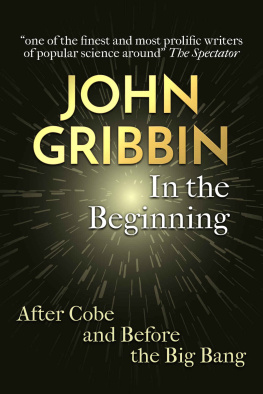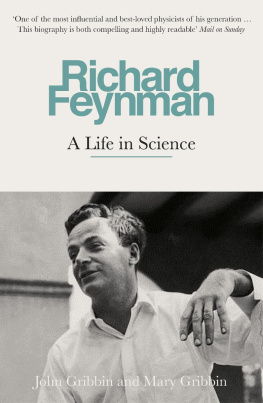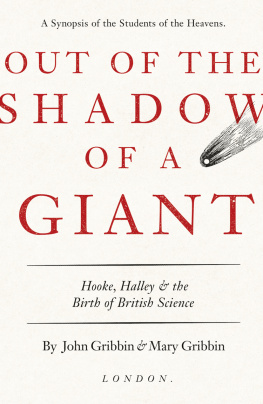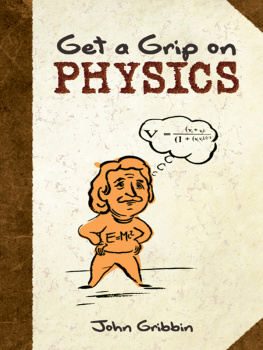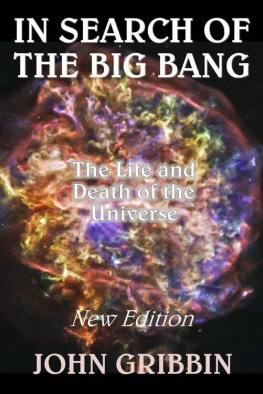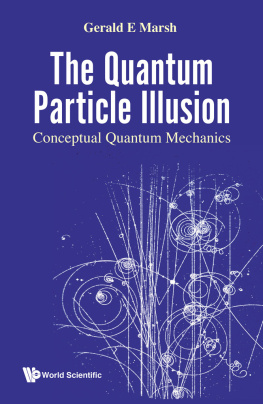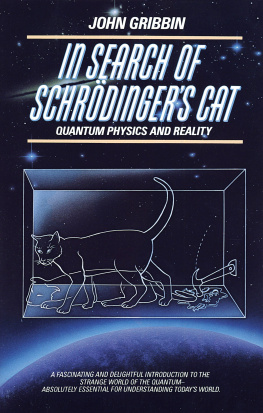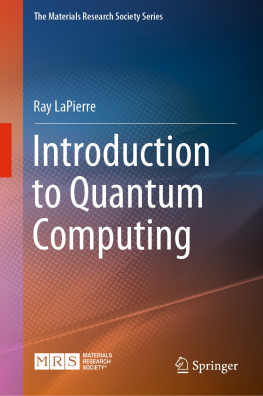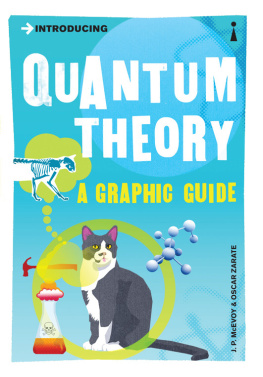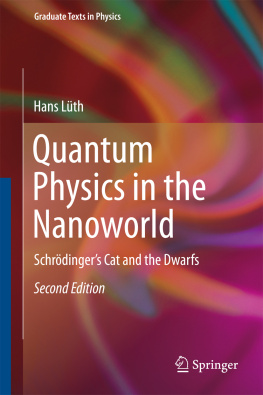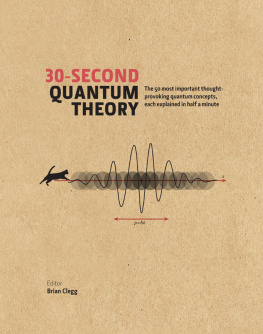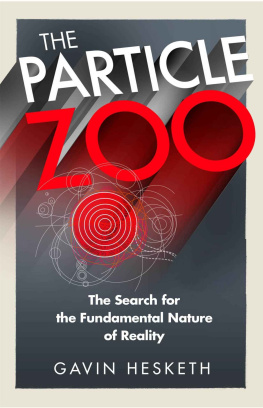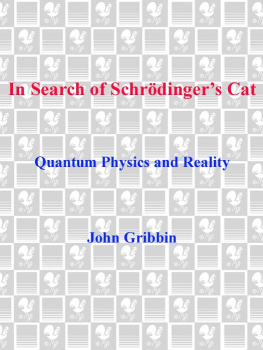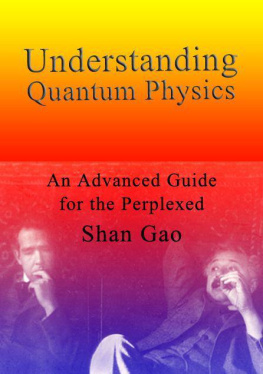The Quantum Mystery
How the experiment with two holestransformed our understanding of the world
John Gribbin
Copyright 2015 by John Gribbin
[Richard] Feynman was fond of saying that all of quantum mechanics can be gleaned from carefully thinking through the implications of this single experiment, so it's well worth discussing.
Brian Greene, The Elegant Universe: Superstrings, Hidden Dimensions, and the Quest for the Ultimate Theory (1999)
Introduction
Richard Feynman said that what he called the experiment with two holes contains the central mystery, indeed the only mystery of quantum mechanics. The experiment is more formally known as the double-slit experiment, but the more formal language does not make it any less mysterious. In his famous Lectures on Physics, making a comparison with the classical physics of Isaac Newton the laws that apply to things in the everyday world, such as footballs being kicked around Feynman said of the double-slit experiment that it is impossible, absolutely impossible to explain in any classical way, and that it has in it the heart of quantum mechanics. In another book, The Character of Physical Law, he wrote, Any other situation in quantum mechanics, it turns out, can always be explained by saying, You remember the case of the experiment with the two holes? Its the same thing.
I have written about this central mystery before, in books dealing more broadly with quantum physics in all its glory (the terms quantum physics and quantum mechanics are essentially interchangeable). But from questions I have received from readers of those books, it seems to me that it would be appropriate to devote a short essay solely to the central mystery itself, to explain what Feynman was getting at. I hope this will help you to understand why the experiment with two holes is so mysterious. But you will not find here any definitive explanation of how the quantum world works, although I do offer a possible but speculative suggestion. As Feynman also wrote in The Character of Physical Law, I think I can safely say that nobody understands quantum mechanics... Do not keep saying to yourself, if you can possibly avoid it, But how can it be like that? because you will go down the drain into a blind alley from which nobody has yet escaped. Nobody knows how it can be like that.
So fasten your seat belt and enjoy the ride. The mystery began to unfold early in the nineteenth century, when experiments in England and France proved that even Isaac Newton, the founding father of physics, was not always right about the way the world works.
ONE
Holes and spots
Isaac Newton published his greatest work, Philosophiae Naturalis Principia Mathematica, in 1687. This laid the foundations of physics, and established his reputation as the greatest natural philosopher. Seventeen years later, in 1704, he published another great book, Opticks, setting out his ideas about the nature of light. This described the behaviour of light in terms of streams of tiny particles, bouncing off mirrors, being deflected as they passed through glass, and so on. Thanks in no small measure to Newtons towering reputation, this became the established model of light, although there was an alternative explanation, describing light in terms of waves, that had been developed by Christiaan Huygens from the Hague. His work had been published in 1690, but was overshadowed by Newtons later book. Until, that is, the beginning of the nineteenth century.
The experiment with two holes was developed by Thomas Young, building from experiments he carried out involving sound waves when he was working in Cambridge in the 1790s. Sound definitely travels as a wave, a physical vibration in the air, or water, or even in a solid. Young was particularly interested in the way these waves can interfere with one another, so that two sound waves may add together to make a particularly loud noise, or cancel each other out to leave a quiet spot. By this time, although Newtons corpuscular model of light still held sway, a few people notably the Swiss mathematician Leonhard Euler had developed the wave idea in more detail. Young realised that if light did travel as a wave, then the same sort of interference effects that he had observed in his experiments with sound ought to be detectable with light. So he set out to devise an experiment to test the idea once and for all.
He started out by studying water waves in a shallow container, known as a ripple tank. If a wall with a small hole in it is put across the tank and ripples are made on one side of the wall, they pass through the hole and spread out in a semi-circular pattern on the other side. If a second wall, with two holes, is put in front of these spreading ripples, the ripples disseminate through both holes on the far side of the second wall, and the overlapping ripples produce a characteristic interference pattern. In some places the peaks of the two sets of ripples coincide to make large waves; in other places the peak from one ripple coincides with the trough of another ripple, and the water is hardly disturbed. You can see the same sort of interference pattern if you drop two stones simultaneously into a still pond.
In the early 1800s, Young adapted this experiment to study light. Instead of a ripple tank, he had a darkened room with a source of light (such as a hole in a blind to let in a beam of sunshine) and three screens, which could be made of something as simple as cardboard or paper. A hole in the first screen, or in the window blind, acting as a screen, lets in the light, like the hole in the first wall in the ripple tank letting ripples through. The second screen has two pinholes, or in the classic version of the experiment two parallel razor slits, like the second wall in the ripple tank. Finally, there is a third screen, a blank piece of card or paper for the light from the two holes to fall on. Young found that the light arriving at the final screen did indeed make a stripey pattern of light and shade, an interference pattern proving that light travelled through the experiment as a wave. This is the classic Youngs double-slit experiment.
Young went further. He realised that each colour of light corresponds to a particular wavelength, and by careful measurements he was able to calculate the wavelengths of different colours of light. The wavelengths are tiny typically about half a millionth of a metre which is why it took so long, and such careful experiments, to prove that light travels as a wave.
When he described his results to the Royal Society in London in 1803, Young said, The experiments I am about to relate... may be repeated with great ease, whenever the Sun shines, and without any other apparatus than is at hand to every one. And in 1807 he described the results in detail:
The middle [of the pattern] is always light, and the bright stripes on each side are at such distances, that the light coming to them from one of the apertures must have passed through a longer space than that which comes from the other by an interval which is equal to the breadth of one, two, three, or more of the supposed undulations [wavelengths], while the intervening dark spaces correspond to a difference of half a supposed undulation, of one and a half, of two and a half, or more.
But there were still doubters. In Britain at least, it was almost heretical to suggest that Newton could have been wrong. And many people found it hard to get their heads round the idea that you could make darkness by adding two beams of bright light together. The doubters were finally persuaded by the work of a Frenchman, Augustin Fresnel, who, thanks to the Napoleonic Wars, knew nothing of Youngs work at the time he devised his own experiments. (Fresnel was born in Broglie, Normandy. The name Broglie will come up again in this story!)
Next page

